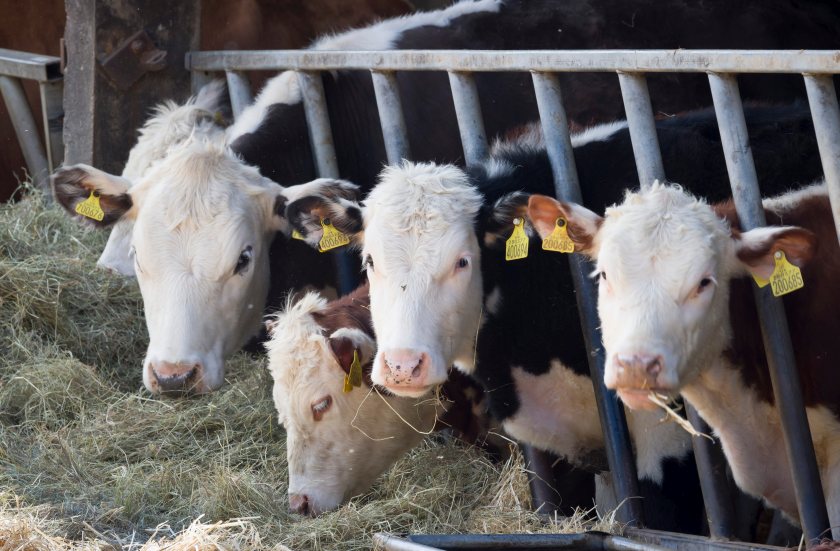
Market prices across the UK’s beef, sheep and pig sectors have remained well above the five-year average in 2025, despite evolving supply dynamics and seasonal fluctuations.
This is according to new analysis from Quality Meat Scotland (QMS), published today (12 May), which notes that prices have been supported by strong demand, tight supply and stable market conditions despite pressures.
Beef sector shows sustained strength
Prime cattle values rose steadily through April, although the rate of growth eased over the Easter period as competition weakened during the shortened working weeks.
Cow prices have also demonstrated an unusually robust seasonal rise, staying closer to prime cattle values than is typical for the time of year—reflecting constrained supply in the manufacturing beef segment.
Store cattle prices have strengthened in tandem with the finished trade but stabilised during the peak spring selling period.
Despite a smaller 2024 calf crop, auction volumes in early 2025 have slightly surpassed those recorded last year.
Data from Defra suggests a more pronounced year-on-year decline in GB prime cattle slaughter during Q1 than price movements alone would imply, with elevated heifer throughput helping to offset the reduction.
Nevertheless, UK beef supply rose by 4% in 2024 without exerting downward pressure on prices—highlighting underlying strength in demand.
QMS attributes early 2025 price resilience to lower domestic production, reduced net imports, and increased consumer spending.
While cattle availability may temporarily rise in May, supplies are expected to tighten over the summer.
The organisation notes that smaller calf crops from 2023–24, coupled with a reduced national herd in 2024, are likely to constrain production further into 2026.
Lamb prices under pressure but remain firm
Lamb prices experienced some downward pressure in April, driven by increased hogg carryover, heavier carcase weights, and more subdued demand.
Nonetheless, prices remain more than 10% above the five-year average, while auction throughput in Scotland rose 3% in the first four months of 2025.
A late Easter boosted April volumes, which have since moderated but continue to exceed 2024 levels.
QMS anticipates a seasonal decline through May and June, though overall activity may remain comparatively high.
Retail lamb sales declined over the winter period, with high prices dampening demand.
However, QMS expects the earlier timing of Eid al-Adha this year (6–10 June) could offer a short-term boost in consumer interest.
Export demand remains firm, particularly from France, where attractive wholesale pricing continues to support UK shipments.
Meanwhile, lamb imports from Australia and New Zealand reached a seven-year high in early 2025, supported by competitive pricing and increased Australian output—despite tighter supply in New Zealand.
Pig sector sees stable growth
In the pig sector, prices have followed a more typical seasonal trajectory in 2025, edging upwards since February as slaughter volumes declined following winter highs.
This marks a return to normalcy after an atypical price drop during spring and summer last year.
Current pig prices are estimated to be 15–20% above the five-year average and are marginally above production costs.
GB pig slaughter rose by 4.5% in Q1 2025, following a 2% increase in 2024. This growth is supported by census data showing a larger slaughter pig population in England. Heavier carcase weights have also contributed to overall production growth.
In Scotland, while pig numbers sent for slaughter declined slightly, abattoirs processed nearly 6% more pigs year-on-year in Q1—signalling continued market stability.
UK pigmeat supply rose by 4% in 2024 and continued its upward trend into early 2025. Despite this, stable prices indicate resilient demand.
Though EU pig prices climbed more quickly than GB’s this spring, they remained 15–20% lower in April and have not applied downward pressure on British prices.
The USDA forecasts global pigmeat production will hold steady in 2025. Should US pork exports to China fall, UK and EU exporters may be well positioned to benefit from any market gap, QMS notes.
Outlook and economic context
QMS cautions that input costs remain elevated compared to pre-pandemic levels, sustaining cost pressures across red meat supply chains. However, a weakening US dollar may offer some relief later in the year.
Average wage growth of 5–6% over winter has outpaced inflation, supporting disposable incomes, according to the organisation's analysis.
While some indicators point to weakening demand and job losses in parts of the private sector, official data from the Office for National Statistics (ONS) shows employment levels have remained steady and pay growth robust.
Consumer confidence dipped slightly in April due to financial market volatility and broader economic concerns, though household sentiment around personal finances remains relatively balanced.
Despite some price resistance—particularly in the lamb category—meat retail performance continues to be broadly stable.
